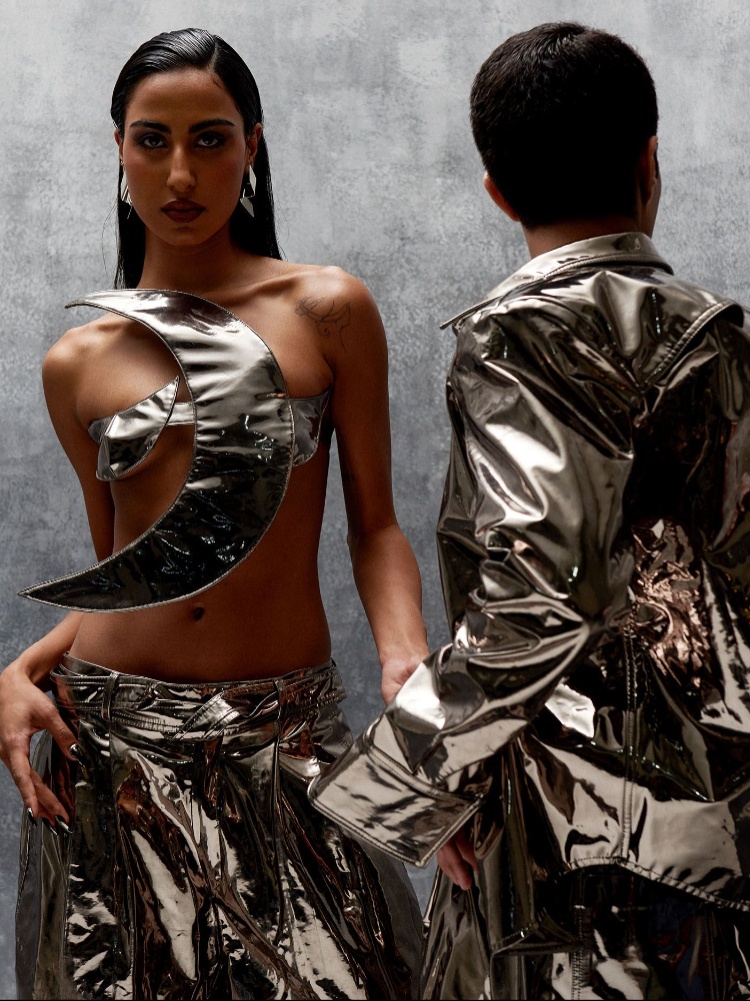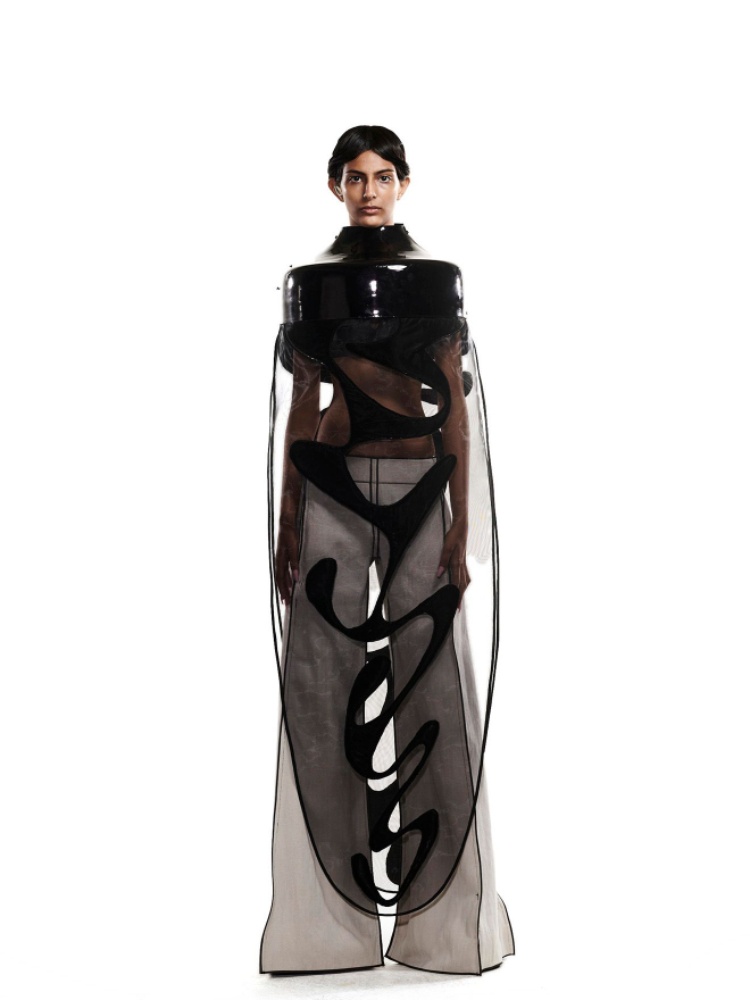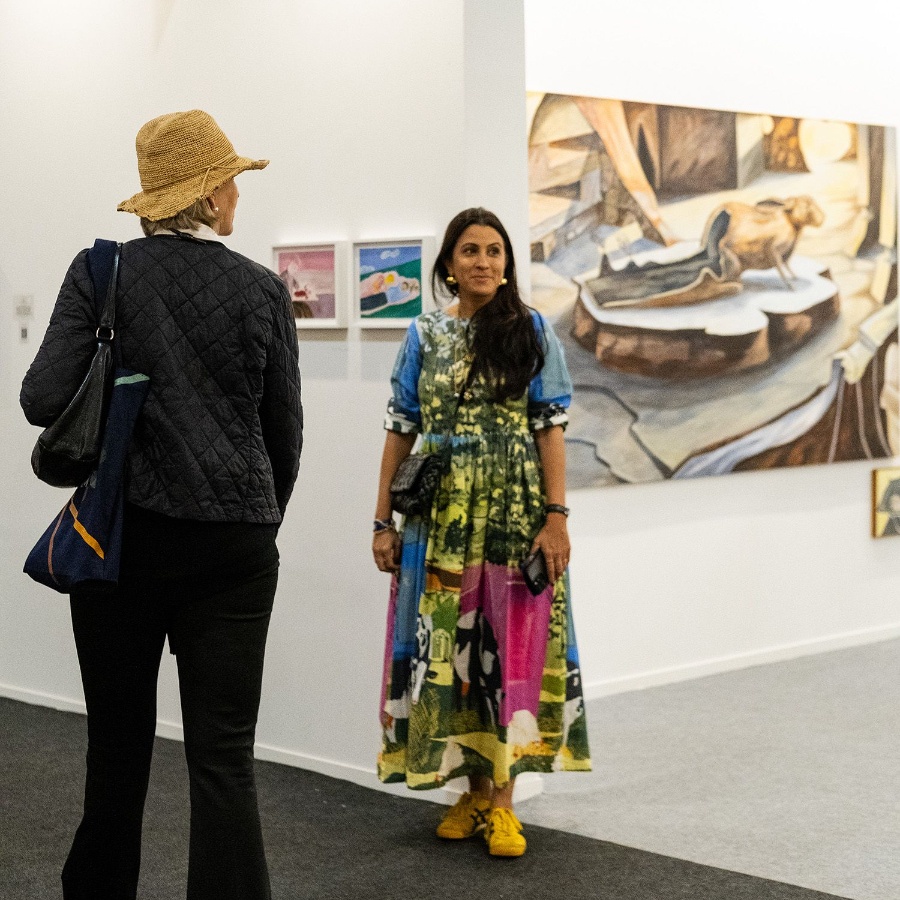At Paris Fashion Week, Pakistani-origin designer Rohan Mirza’s showcase had disheveled models emerging from the rubble of an apocalyptic aftermath as sounds of gunfire collided with trap beats and opening dialogues from the slasher video game, MadWorld. Appropriately titled Nuke Town, the collection quickly went viral for its 3D-printed dress whose silhouette mimicked the explosive ascent of a nuclear mushroom cloud, jerseys made of prosthetic skin, and a trompe l’oeil leather dress moulded to mirror a bandolier of bullets. It was almost as if characters from Resident Evil or Cyberpunk 2077 had stumbled out of our screens and into the real world.
Mirza, known for drawing inspiration from video games and sci-fi movies, is part of a new breed of South Asian designers steering fashion’s futuristic direction.
With its endless churn of climate catastrophes, war-ravaged realities, intergalactic ambitions, and apocalyptic scenarios, our news cycle can seem like an endless doomscroll, one that forces us to confront the fragility of our future. From this context comes a new guard of designers, intent on envisioning how we’ll dress as we crash-land into a dystopian reality.
The fear of an imminent apocalypse has long fuelled the fashion world’s imagination: we saw it stomping through the mud at Balenciaga’s spring/summer 2023 show, in Rick Owens’s ‘cashmere spacesuits to wear in a concrete spaceship’ for fall/winter 2024, and in the merging of Mad Max motifs with samurai influences way back in John Galliano’s fall 2007 menswear show.
For most designers who are ushering in this era of fashion, it isn’t just about playing with avant-garde aesthetics for the sake of looking futuristic. It’s about thoughtfully future-proofing fashion to carry us into a potentially terrifying tomorrow.
That was the starting point for Outbreak Lab, an emerging Indian brand that leverages cutting-edge technology to create Dune-coded utilitarian uniforms. “Futuristic fashion or art can sometimes be very gimmicky, but that’s not actually what our tomorrow will be like,” says Divyam Jain, the brand’s co-founder. The vision of Jain and his high-school friends Sayasha Chopra and Arnav Shah—who had no formal fashion education or training—Outbreak Lab harnesses technology like 3D printing and generative design to craft its post-apocalyptic pieces, many of which are inspired by video game mechanics. “Growing up, I was always sad when I found out that things I saw in sci-fi movies or video games didn’t exist in real life. So, [my aim with] the stuff I’m creating is to try to [bring those ideas] into the real world.” The brand’s most recent drop draws heavily from the design features of Jain’s favourite video games. Standout pieces include the Armadillo jacket, a bulky silhouette modelled after the high-tech vambrace worn by the titular character of the game Ratchet & Clank to give him super strength, and the Diffuser denims, inspired by the aerodynamic efficiency of cars in racing games.






